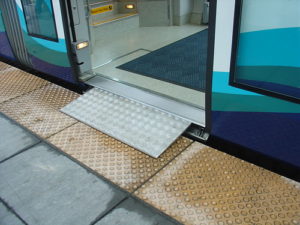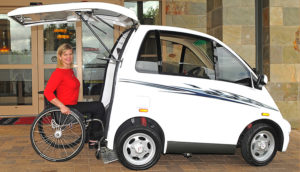The Need for Accessible Transportation
Any tourism activity involves travelling to the location where it is to take place. Transport is one of the key elements with the greatest impact on the quality of travel by persons with disabilities and specific access requirements.
 Likewise, at the destination itself, moving around may constitute a challenge for any person, but for persons with disabilities or specific access requirements it may be an insurmountable obstacle if the infrastructure and the movable elements are not adapted.
Likewise, at the destination itself, moving around may constitute a challenge for any person, but for persons with disabilities or specific access requirements it may be an insurmountable obstacle if the infrastructure and the movable elements are not adapted.
It is of the essence for all stakeholders in society – ranging from associations of persons with disabilities, to city councils, governmental organizations and the transport companies themselves – to make a commitment to achieving suitable conditions in transport.
This commitment should take the form of actions affecting the environment and the information, stations and means of transport themselves, so that seamless travel is possible.
 Transport is usually left out of research on accessible tourism. However, adapting infrastructure and services, as well as providing information on transport, constitute key factors in the value chain of accessible tourism.
Transport is usually left out of research on accessible tourism. However, adapting infrastructure and services, as well as providing information on transport, constitute key factors in the value chain of accessible tourism.
The success of actions aimed at adapting transport is not only reflected in the sphere of tourism. The advantages of accessibility in transport clearly prove that its beneficiaries are not only persons with disabilities, because such accessibility benefits all users in general, especially the entire local population.
A direct relation has been observed between increased accessibility in transport and enhanced efficiency of use and frequency of means of transport.
 One such endeavor to ensure everyone can get around is the programme to implement accessible taxis, or Eurotaxis, that was developed in Spain by the ONCE Foundation with the support of IMSERSO [Spain’s Institute for the Elderly and Social Services]. This programme enables wheelchair users to in ride taxis without needing to transfer or leave their wheelchairs.
One such endeavor to ensure everyone can get around is the programme to implement accessible taxis, or Eurotaxis, that was developed in Spain by the ONCE Foundation with the support of IMSERSO [Spain’s Institute for the Elderly and Social Services]. This programme enables wheelchair users to in ride taxis without needing to transfer or leave their wheelchairs.
Taxi services are a key element in meeting “door-to-door” travel needs in all transportation systems worldwide. In the past three decades, adapted taxis have been a solution supplementing the usual public transport means, whether adapted or not. Moreover, taxis constitute an advantage for tourism, as they make it possible to access places outside traditional routes.
*From The Manual on Accessible Tourism for All

